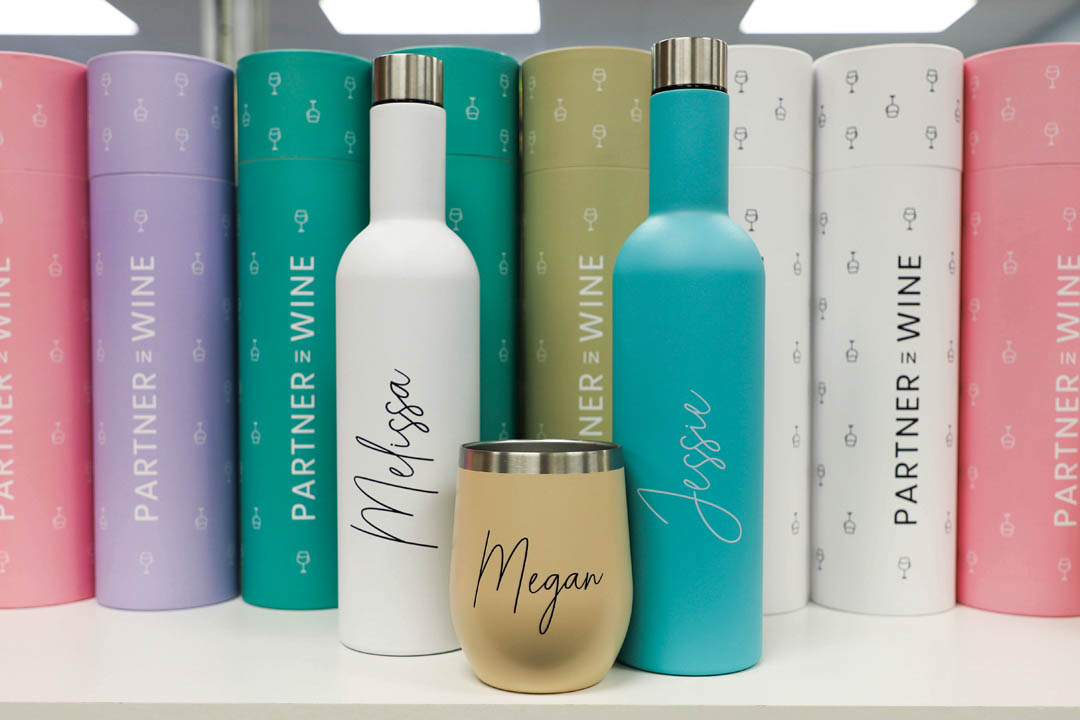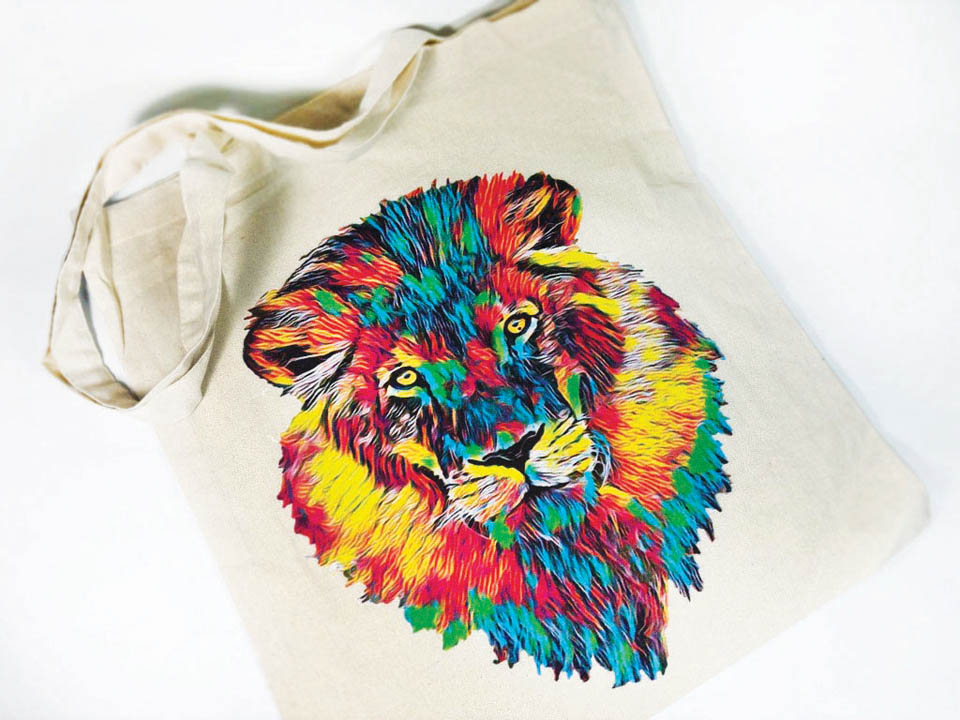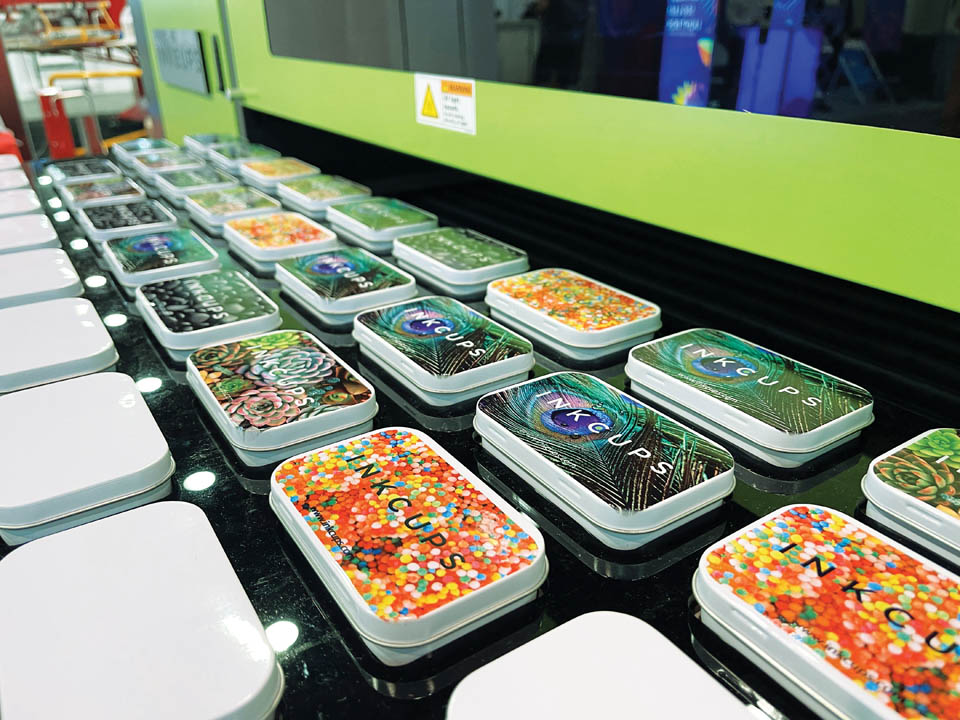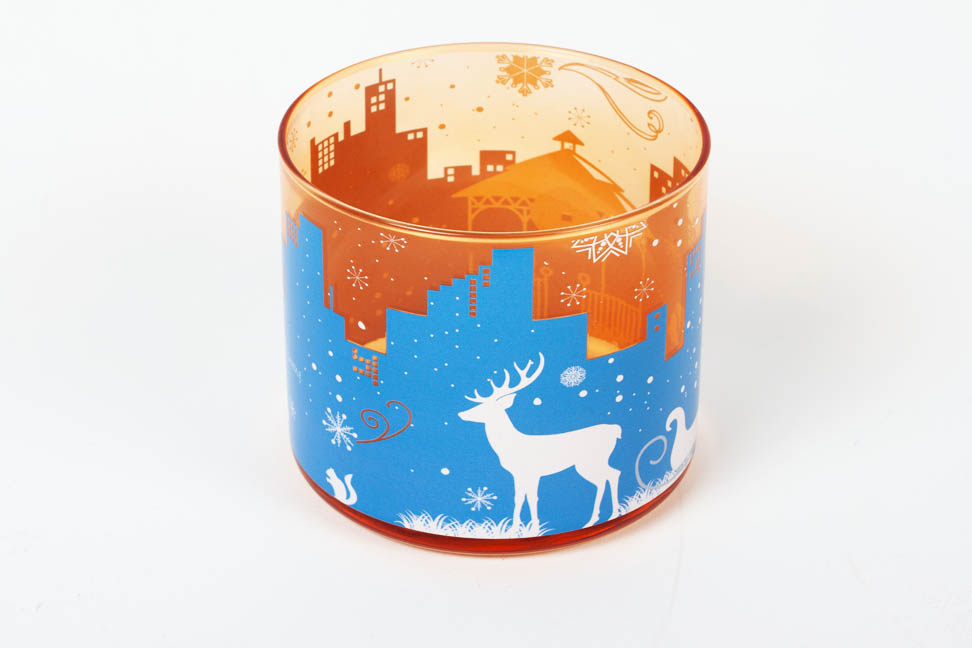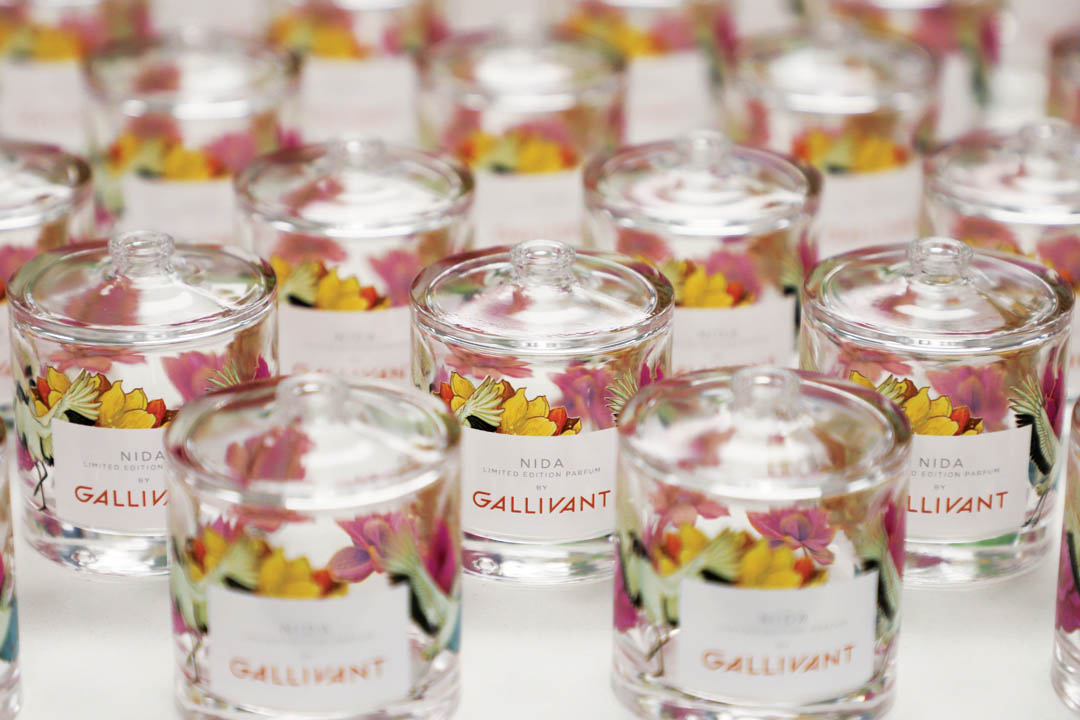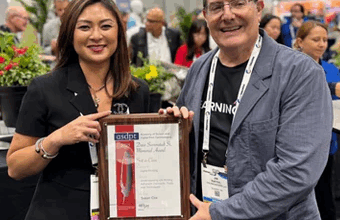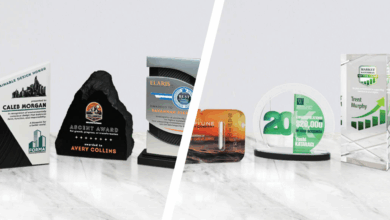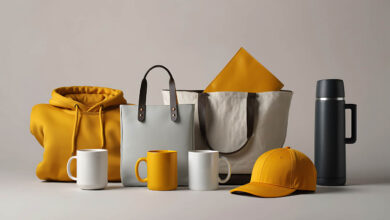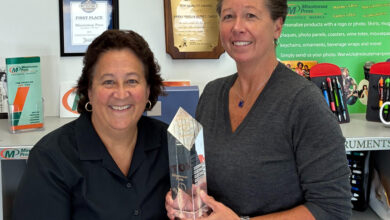Throughout the print industry, lines are blurring. Where once a signage specialist focused only on signs, today many also wrap cars or produce printed home decor for B2C customers. Brand-focused commercial printers are dabbling in the worlds of packaging and POS. And apparel decorators are turning their hands — and equipment — to products ranging from drinkware and sports bottles to coolers and work safety gear.
There are blurred lines in the world of technology, too, with many graphics shops diversifying their equipment portfolios as they seek to add new revenue streams, better meet customer needs, and boost their profitability.
The growing appeal of direct-to-object printing
One technology getting a lot of interest from those seeking to expand their capabilities is direct-to-object UV digital printing. Direct-to-object (DTO) or direct-to-shape printing has been shaking up the promotional and industrial printing markets since its advent in the late 2010s. That growth shows no sign of slowing down, with market projections suggesting a CAGR of 9.5% for the U.S. direct-to-shape market through to 2030.
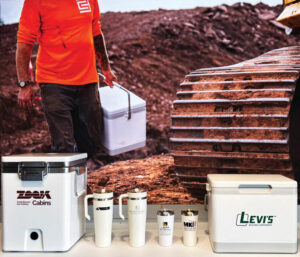
Simply put, DTO printing involves using inkjet digital printing to apply a two-dimensional image to a three-dimensional item before fixing this in place by “curing” the ink with UV light. It moves print far beyond the printed page, T-shirt, or even flag, making it possible to print directly onto drinkware, glass bottles, pens, coolers, candle holders, sporting goods, reusable tote bags, beverage cans, automotive parts, ceramic tiles, tech accessories, tools, candy, and so much more. Cylindrical DTO printing takes this even further, making it possible to seamlessly print 360-degree designs featuring vivid colors and intricate designs onto cylindrical items such as packaging and drinkware.
Furthermore, because this is digital printing technology, it is entirely viable to switch between printing one-off items, small batches, and larger runs all in a single shift, with minimal set-up and clean-up in between, and very little waste. This makes it an ideal technology for prototyping, small batches, mass customization, and personalization.
Make it personal to profit from print-on-demand
Driven by demand from consumers for personalized products alongside the rapid expansion of e-commerce that we’ve seen since the start of the 2020s, the $2.5 billion U.S. print-on-demand market is forecast to grow at between 22% and 27% over the next decade. Of course, with T-shirts and hoodies typically topping the print-on-demand sales charts, none of this will be news to graphics shops that offer apparel decoration. But for those who have begun to tap into this market, DTO printing has the potential to broaden the range of personalized items they can create and potentially derive greater profit margins from higher-value products.
Many of the fun sayings and graphics that sell well on apparel in the consumer print-on-demand market can prove equally popular on mugs, reusable water bottles, tote bags, or notebooks. And with some of these items just as, or even more popular than apparel when it comes to personalized gifts, expanding your capabilities can be a shrewd investment for businesses already supplying drop shippers or consumer-facing businesses.
A great example of the power of personalization is Proper Goose, an Inkcups customer in the UK that has built a gifting business out of personalizing products using DTO technology. They offer their customers drinkware, homeware, phone covers, and even bottles of gin, all of which can be personalized with messages or photographs to create unique gifts, as well as supplying other B2C businesses with personalized drinkware.
Open up opportunities in packaging
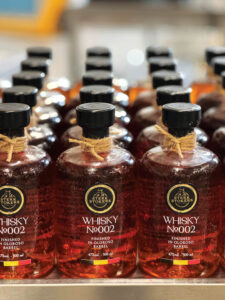
Another of the market segments driving significant growth in DTO is packaging, where it is giving rise to leaner and more sustainable models by enabling on-demand production, low-inventory supply chains, and even waste reduction through the elimination of shrink sleeves and adhesive labels. It is also ideally suited to the creation of limited edition products, seasonal variations, and mass customization campaigns.
Following the success of the craft beer industry, growing numbers of small distilleries and independent beverage producers are taking advantage of the consumer appetite for unusual flavors, local-first ingredient sourcing, and more sustainable production practices. Alongside this, “indie” cosmetic brands are also tapping into consumers’ quests to find brands that feel personal to them. As a result, there is a growing market for “small batch” packaging that can be produced as needed, and customized or even personalized, all of which is hugely appealing for brands seeking to maximize their artisanal image and unique value proposition.
Consider the example of Sterkstokers, a Belgian distillery that has built a business out of inviting restaurants, hospitality businesses, companies, and even individuals to design their own spirit, right down to the bottle, which is then printed on-site using DTO technology.
Meanwhile, Bottled Goose, the trade-focused arm of Proper Goose, regularly prints small batches of bespoke and limited-edition packaging for both fledgling and established brands.
Upsell to unveil new revenue streams
One of the maxims of sales is that it is easier to sell to an existing customer than a new one, which is why the route into DTO printing for so many graphics businesses sees them expanding their capabilities to complement an existing offering. For workwear specialists or vehicle branding businesses, complementary products might include branded drinkware, toolboxes, and tablet covers, while merchandise producers could look to stadium bags as a profitable new product line.
One Inkcups customer did just this when they spotted an opportunity to expand their offering beyond garment branding. The Branding Lab in the UK is a trade-only business that invested in cylindrical DTO printing technology to broaden the range of branded products it offers and is now also able to use the short turnaround times it can offer on 360-degree bottle printing to help it stand out from the competition.
Entry-level investments that can grow with the business
As with all new technologies, a considerable investment in DTO printing capabilities may seem like something of a gamble to those unfamiliar with it. However, one of the reasons that DTO printing is already so popular in the promotional products arena is the availability of high-quality entry-level options. With lower price points and smaller footprints, these options can make it easier to “test the waters” of new market segments and demonstrate potential new product lines to existing customers. There are also modular ranges, which make it possible for businesses to expand their capabilities as they grow.
Market segments are converging as businesses everywhere look for new ways to deepen their customer relationships and increase their profit margins. For those who think creatively about ways to complement their existing offering and strengthen their USP, the changing market landscape could mean a bright future. The only question is, what are you going to print on next?
